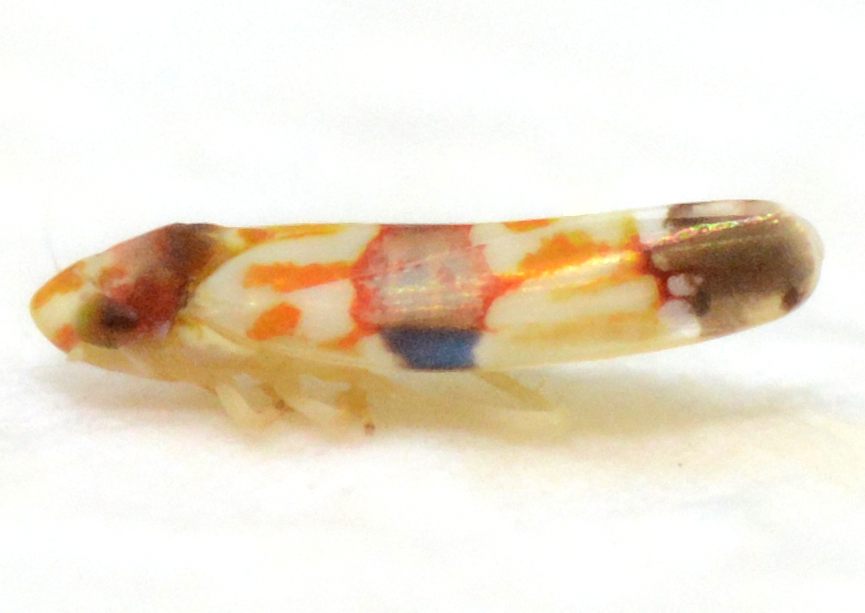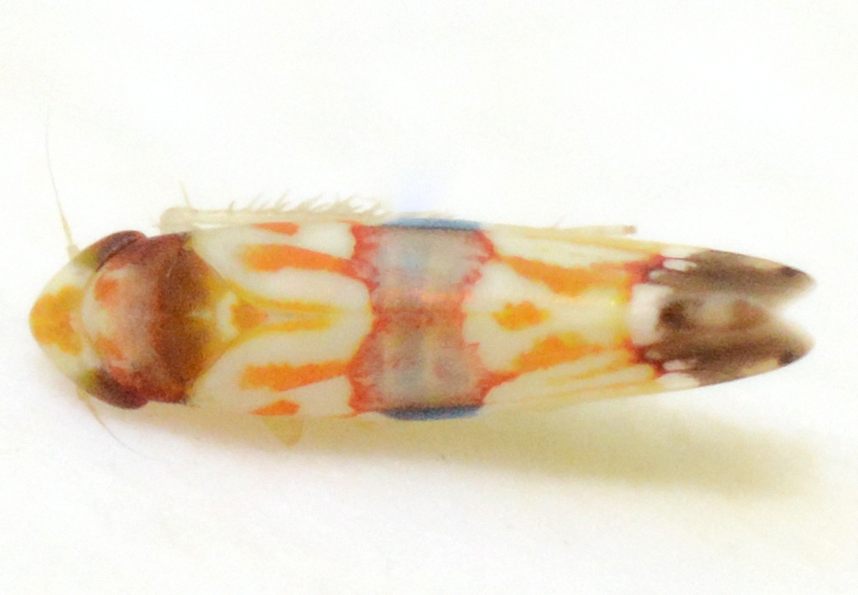Description: A banded species with a yellow or white dorsum and a red, orange, or brown color pattern. There are two parallel orange submedial lines on the head with a pale midline, though this can sometimes be fused into a single thicker mark. The body has three dark transverse bands- on the thorax, middle of the wings, and wing tips. The thoracic band, which extends across the upper part of the mesonotum/scutellum and most of the pronotum, is brownish-red; the apex of the scutellum is contrastingly pale. The anterior side of the band facing the vertex typically fades into the head. The band across the wings is a pale red, as if someone has erased the color of the band; this is key for the species. The wing tips are dark gray to blackish. There is a large blue to black spot on the costal margin of each wing, and a distal spot in the second apical wing cell. The face and underside of the thorax are completely pale. Adults are 3.0-3.2 mm long. (Dmitriev & Dietrich, 2007)
For more pics of this species, see: BG. |

 »
»




 »
»


